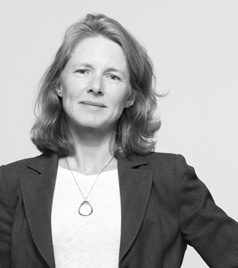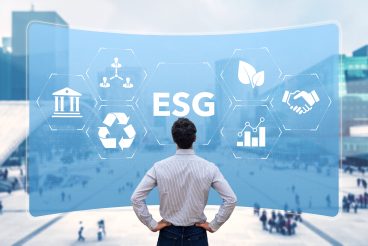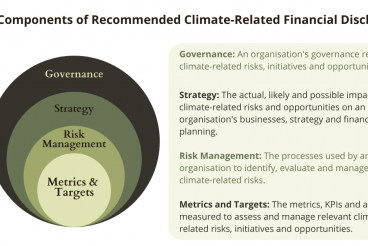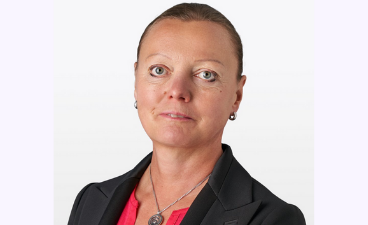
In our contacts with clients and prospective customers, we find tremendous confusion related to the definition of ‘sustainability’ and how it is different and distinct from sustainable finance, sustainable investments, ESG, CSR, and circularity. We think there’s no one better than the newest member of our International Advisory Board to help us sort through the muddle.
Sophie Öberg is the Deputy Director of Inspiring More Sustainability Luxembourg (IMS), the country’s leading network for corporate responsibility. A sustainability and communications expert, Sophie also co-chairs the Sustainability Strategy for Boards committee at the Luxembourg Association of Independent Directors.
This is the first of two parts (read Part 2 here) in which Sophie “unpacks” the issues, offers some history and context, and names some local and global players she admires for their circularity and commitment to transformational strategies.
Stay tuned for part two, in which Sophie explores the ROI of sustainable business practices and circularity, what it takes for organisations to truly commit to change and more.

How is ESG different from CSR from sustainability, from circularity, from green economy from net zero, from…? Is there an overall category within which they all live – does ESG encompass them all?
If you’re asking me whether there are different names for the same reality/concept, then the answer is… Yes and no. The truth is that we must look at the bigger picture: These are different terms coined in different contexts on different occasions under different circumstances.

As such, some centre more specifically on certain aspects, while others are more holistic in approach. What I find particularly interesting is that the evolving definitions of the denominations themselves – as well as the diversity among them – illustrates a concurrent shift in perspectives when it comes to the landing on the definition of ‘sustainability.’
For that reason, I believe that to identify the distinction among the myriad terms, concepts and acronyms across the sustainability landscape, it is important to look at where they all come from and how they have built on each other.
The word ‘sustainability.’ For instance, is said to have first appeared in Germany (‘Nachhaltigkeit’) as early as 1713. Carl von Carlowitz, in charge of the silver mines of Frederick Augustus of Saxony, King of Poland, published a treatise on forestry. In it, he expressed his alarm at the consumption of wood and insisted on the need to limit its exploitation to ensure its sustainability.
Corporate Social Responsibility (CSR), meanwhile – which has gained particular traction in recent decades – actually dates back to the late 19th century in the United States, where philanthropy was promoted among entrepreneurs. It was then developed mainly in the post-WWII period, especially thanks to the book Social Responsibilities of the Businessman written by Howard Bowen and published in 1953.
Then in the In the 80’s, the United Nations published the book, Our Common Future, also known as the Brundtland Report. In it, the modern concept of sustainability, or sustainable development, was set out as development that “meets the needs of the present without compromising the ability of future generations to meet their own needs.”
Following that, in the 90’s, the notion of sustainability was more clearly defined as composing three interconnected pillars: social, environmental and economic. Also commonly referred to as People, Planet, and Profit.
It is from there that the Triple Bottom Line framework was developed, which was then fine-tuned to replace ‘Profit’ with ‘Prosperity,’ as the latter refers to the positive economic impact an organisation has on a society, for example by creating employment, inspiring innovation or paying taxes. That shift also cemented the framework’s stance that ‘Profit’ is a means, not a goal in itself.
With that preamble out the way, I would say that the 3BL is one of the best concepts currently available that encompasses the rest. ‘Green economy,’ ‘net zero,’ and ‘circularity’ – to take some of the examples you mentioned – focus more specifically on just one of the pillars: namely the environmental one, at least in their initial scope. After all, the three pillars impact each other as they are so deeply interconnected, as per the definition of sustainability.
As for the acronym ‘ESG,’ it was coined by the finance sector in the 2000s to designate responsible investing, which was understood as the integration of Environmental, Social and Governance (ESG) factors into investment processes and decision-making.
The underlying idea is that ESG factors cover a wide spectrum of issues that traditionally are not part of financial analysis, yet may have financial relevance. The long and short of it is that yes, in some ways ESG is a synonym for ‘sustainability’ – but it is mostly used in the finance sector in the context of investments.
A final word on this subject: I feel that we must consider the pretty common misunderstandings around the topic due to the fact that the adjective ‘social’ is often seen as synonymous specifically only with the social dimension. That’s why it would be more appropriate for an organisation to talk about ‘sustainability’ or ‘sustainable business’ when discussing its commitment to work on the three pillars.
That distinction would better embody the shift we are seeing across an increasing number of organisations around the world that are moving from a focus on CSR to sustainability or sustainable business; from valuing ‘doing good’ to creating economic and societal benefits relative to costs; from philanthropy and citizenship to joint company and value creation.
Is the expression Circular Economy an apt one, or does it create more confusion?
Just because some confusion man arise around the term doesn’t mean it isn’t apt. The more it is used, the more people will come to understand what it means.
While ‘circular’ and ‘economy’ may not be words that one would naturally use together, there is a certain balance that is evoked when they are combined. The term ‘circular economy’ refers to a model that eliminates the notion of waste by reusing the materials of the products in a closed loop.
It is easier to understand the process when juxtaposed with its counterpart of a ‘linear economy.’ The ultimate goal of the circular economy is to abandon a “cradle-to-grave” linear logic, and to replace it with a “cradle-to-cradle” circular logic, where waste doesn’t even exist.
How would you define a truly circular business model?
A truly circular business model, and I am referring here to the definition given by the Ellen MacArthur Foundation, is one where waste is eliminated, resources are circulated and nature is regenerated. Those three principles on which a circular economy is based imply innovations from the start, with new ways of conceptualising, designing, sourcing, manufacturing, distributing and consuming.
Crucially, it’s a model that inherently moves away from the current, dominant, take-make-waste system.
So…who would you point to as authentic examples in Luxembourg, Europe and beyond employing such a model?
One example that pops into my mind of a business that has embodied this approach in its DNA from the outset is the outdoor apparel manufacturer Patagonia: from its design and manufacturing of products via renewable energy, to its efficient water usage and socially equitable practices, to the way it recycles and reuses its products again and again, even offering secondhand products in store and online.
Luxembourg offers quite a few recent examples that, although still in the start-up phase, are worth mentioning as excellent templates of circular economy-inspired innovations. In fact, they’re the award winners of the LuxInnovation Circular by design Challenge 2020 edition:
- Cego (circular workspace systems, interior design category)
- Capriole (sustainable fertilizer from coffee, product design category)
- Nana and Rose (maternity rental wear, fashion design category)
- Our Choice Circular Fashion (circular footwear with soles from tires, mobility category)
- Kombucha Leather (bio-based alternative leather, special jury award)
Meanwhile, it’s encouraging to see more and more examples of companies that, although originally far away from any semblance of circularity due to the nature of their business, are nevertheless transforming their strategies where possible.
Luxembourg’s ArcelorMittal, the world’s leading steel and mining company, is replacing the conventional use of coal with biomass in the form of timber from construction waste in Belgium to reduce iron ore in its steel-making process.
Kimberly-Clark, a multinational personal care corporation which produces primarily paper-based consumer products, has developed tubeless rolls for its paper towels and toilet paper rolls.
Sports brands Adidas and Nike have developed technologies that allow them to dye clothes – a traditionally water-intensive process – without using any water.
Electrolux, a global appliance company, has launched Pure i9, a robotic vacuum available on a pay-per-use subscription trial in Sweden that includes service and maintenance in the fee, ensuring that each unit is used to its fullest extent throughout its lifetime.
A final example is the tire manufacturer Michelin, which recently announced the launch of construction on its first tire recycling plant that has a comprehensive recycling solution capable of recovering everything in a tire for reuse.
The transition to circular is a growing shift, but it’s important that we don’t get bogged down in thinking it will be all or nothing in the twinkling of an eye. When major corporations like Nike or Michelin overhaul certain parts of their business, or when some start to overhaul their business model itself for the better, it’s a win.
The full-blown circular overhaul will take time.
We hope you found this article useful. It is part of VitalBriefing’s Sustainability Matters content series, in which we speak with experts across every facet of sustainability, ESG, sustainable finance, impact investing and more. Stay tuned for more insight from thought leaders.
If you or a colleague are interested in participating in the series, please get in touch by emailing eschrieberg@vitalbriefing.com.





